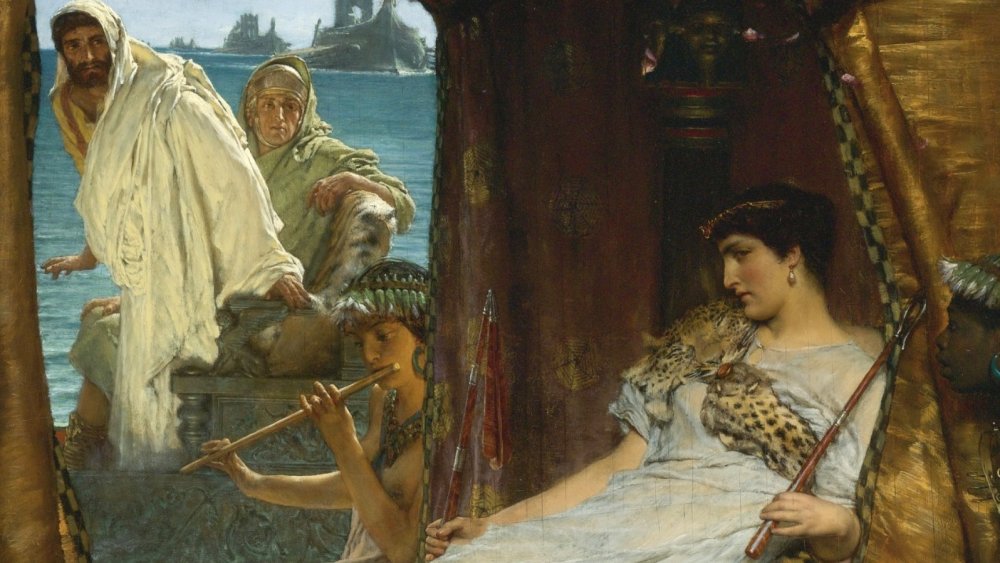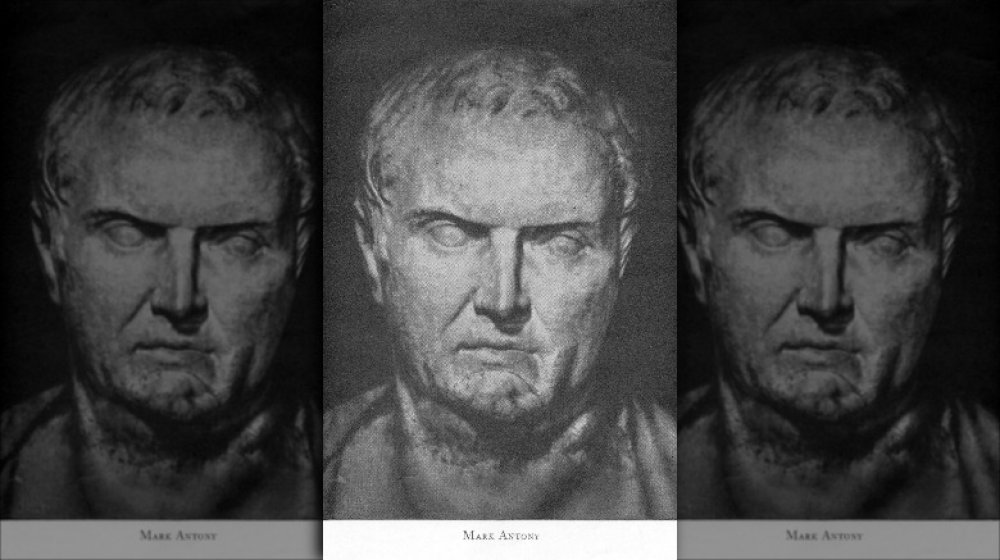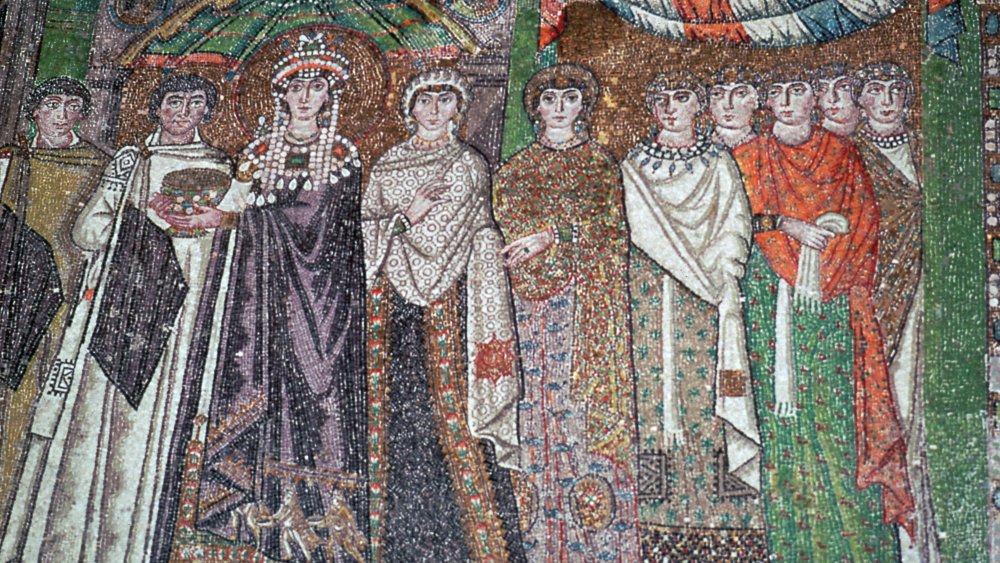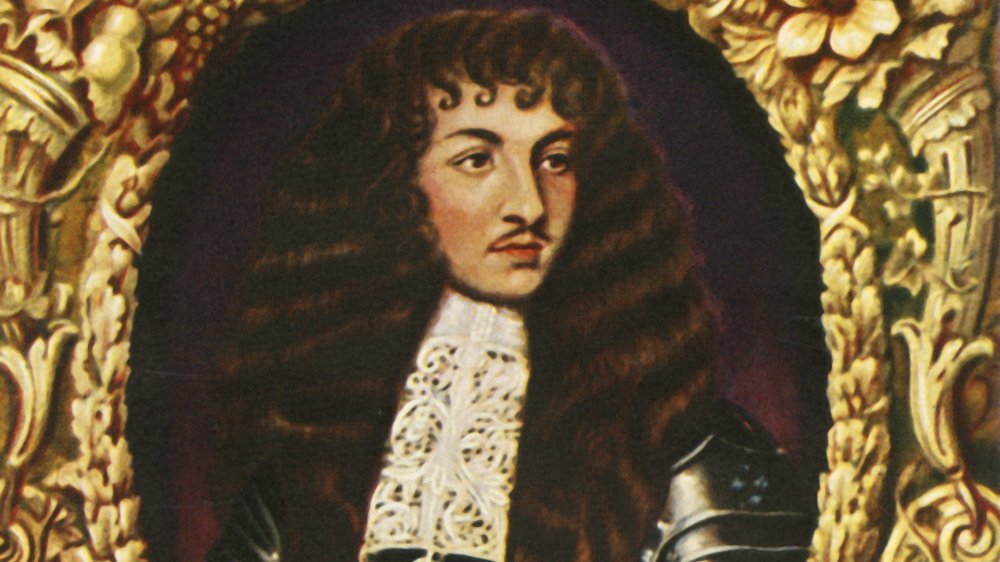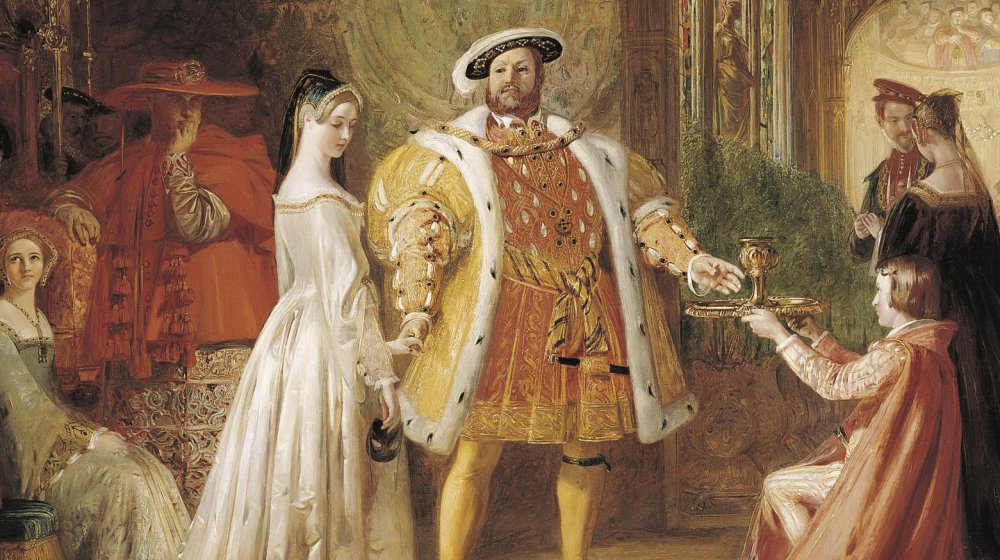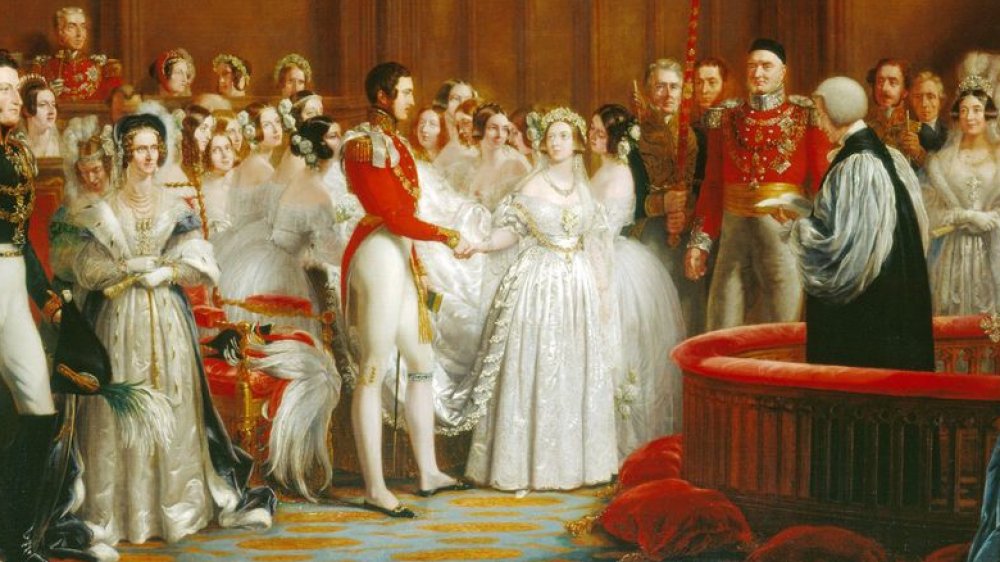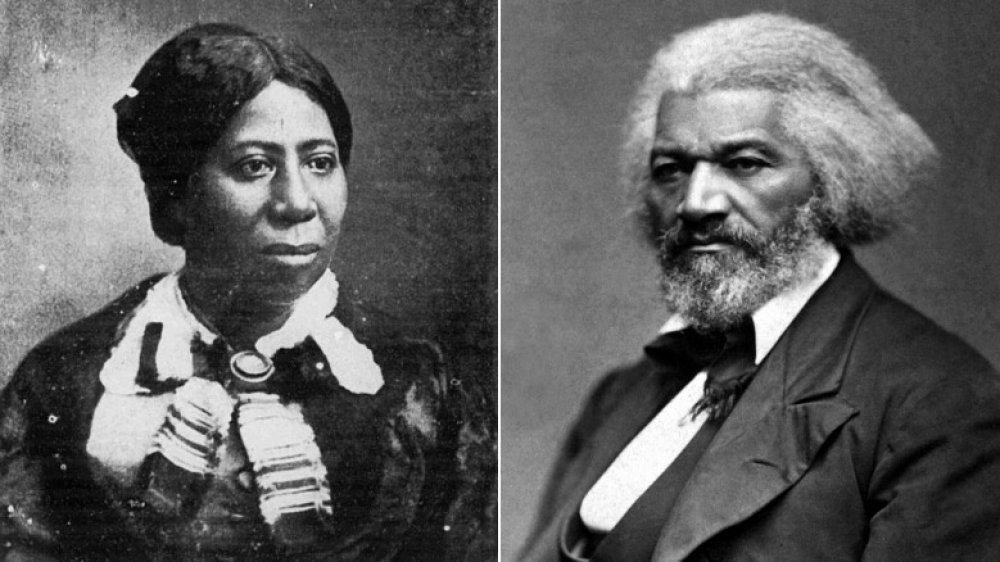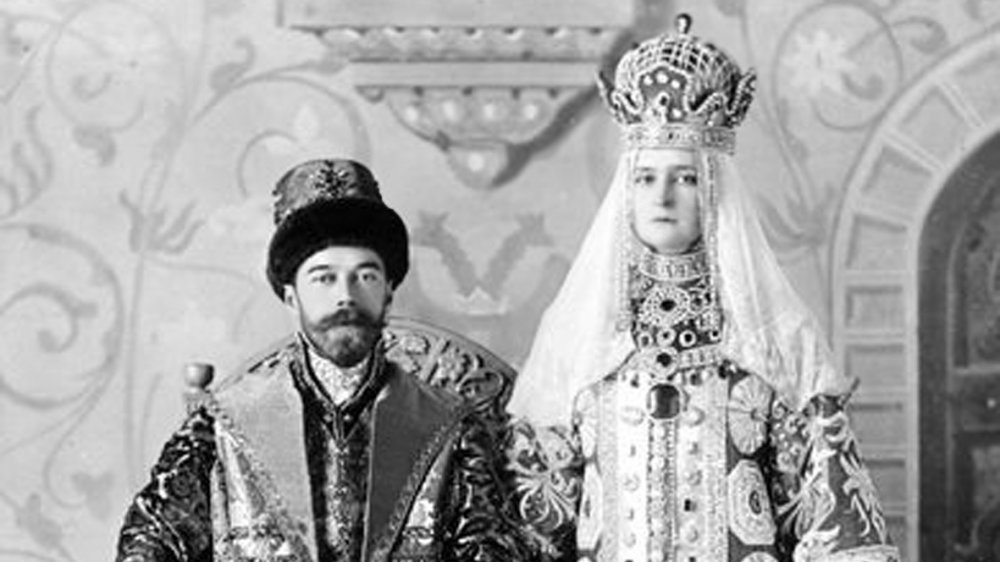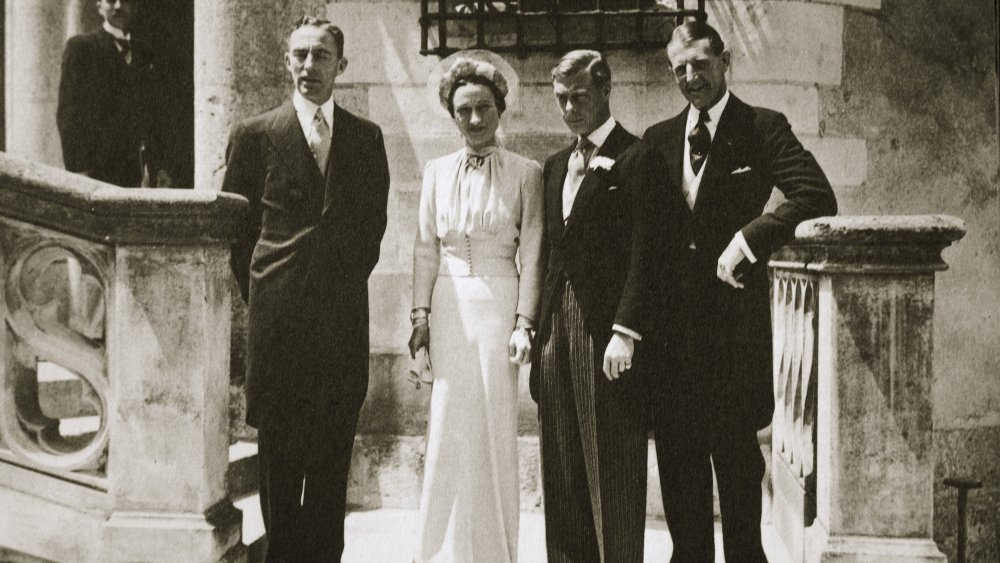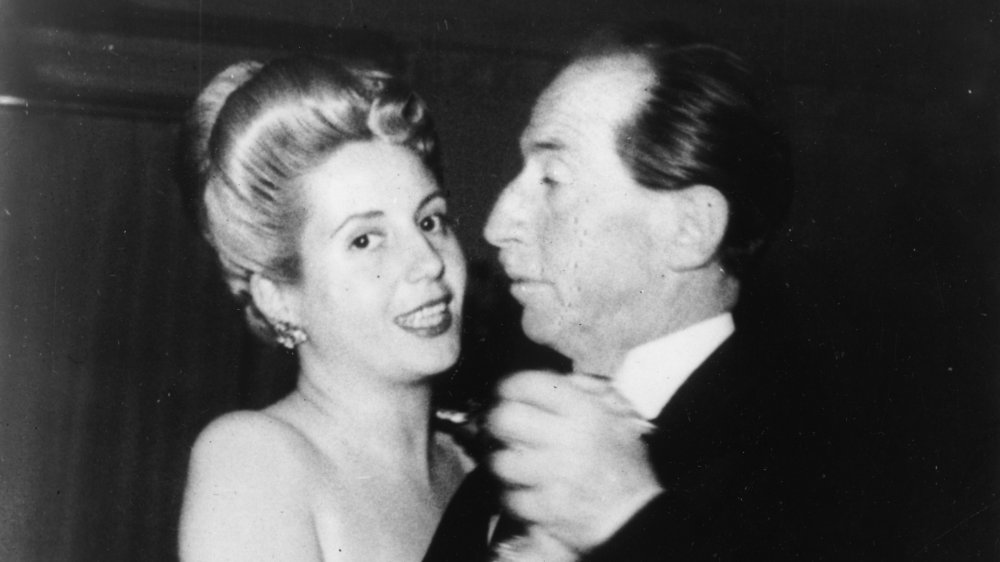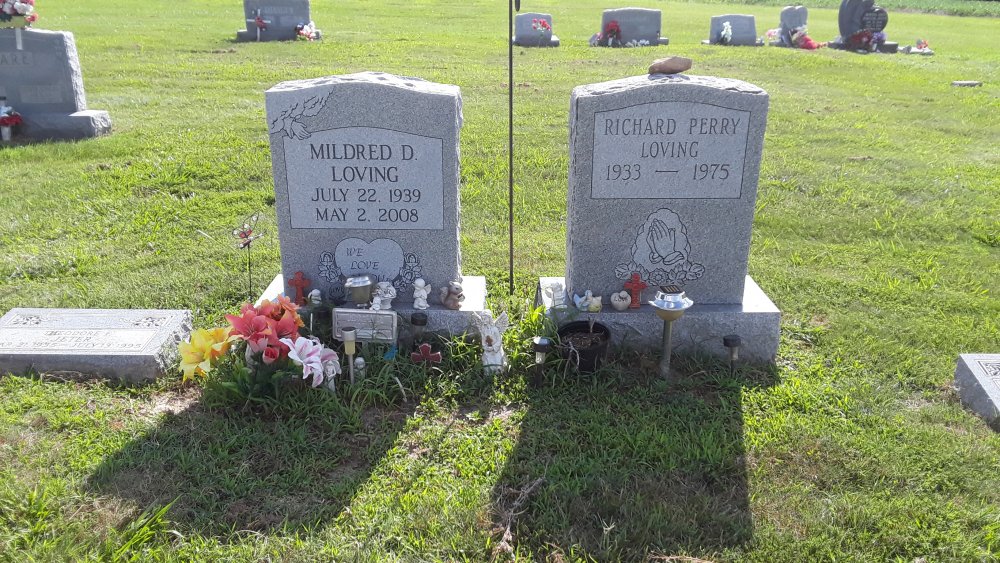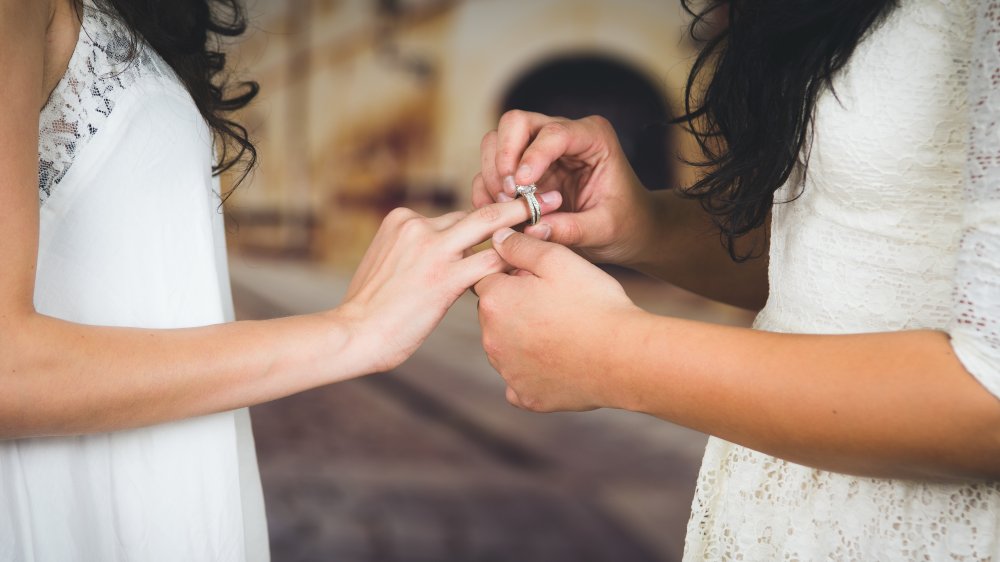Marriages That Changed The Course Of History
Marriage has been a powerful force in our civilization for thousands of years. While it's always seen primarily as a force of love, a way of celebrating the union of two individuals into one unit, marriage can also be used as a potent political force, forging alliances and sealing treaties. There's a reason that books and movies treat marriage as a life-changing event. Whatever lens you view marriage through, one aspect remains constant: It's powerful stuff.
So powerful, in fact, that marriages sometimes change more than lives — they change history. Over the centuries, certain marriages have combined powerful people in chaotic ways. They've changed the leaders and borders of empires. They've changed the rules of civilization and how we live. They've challenged traditions and acted as valiant stands against oppression and discrimination. And even when an individual marriage isn't particularly historically significant, its power is obvious. Many of the lead actors in our combined history have relied on their spouses for support and guidance, after all.
The marriages that have changed the course of history may have started out as love affairs, political alliances, or arrangements. But they're all linked by their impact on the world. Put simply, history would be quite different if the couples on this list had never gotten together.
Cleopatra and Mark Antony
The marriage of Antony and Cleopatra led to the final fall of the Roman Republic. As National Geographic notes, back in 42 B.C., Mark Antony was one of the most powerful men in Rome. In the wake of the assassination of Julius Caesar, Mark Antony formed a shaky alliance with Caesar's adopted heir, Octavian, and an influential general and politician named Lepidus. It was known as the Second Triumvirate.
Antony was put in charge of Rome's Eastern provinces, where he met Cleopatra, the ruler of Egypt. They carried on a torrid affair, and Cleopatra gave birth to twins fathered by Antony. Then he returned to Rome and solidified the Triumvirate by marrying Octavian's sister Octavia and didn't see Cleopatra for three years.
When Antony returned to Egypt, however, he and Cleopatra became devoted to each other. Ancient Egypt Online notes that the two were married in 37 B.C., despite Antony still being legally wed to Octavia. Unfortunately, this happened just as the Triumvirate began to fall apart — and Antony's reputation began to falter. As Biography writes, Antony suffered several military setbacks that were (perhaps unfairly) blamed on Cleopatra. And Antony's seeming abandonment of Rome and his Roman family gave Octavian the ammunition he needed to push Antony out. Civil war broke out, the last vestiges of the Roman Republic dissolved, and by 27 B.C., Octavian was on his way to becoming the first Roman emperor, known as Augustus.
Theodora and Justinian I
Through her marriage to Emperor Justinian I, Empress Theodora of the Byzantine Empire radically changed the social and legal status of women in the Middle Ages. Born a commoner in what was then still referred to as the Roman Empire, according to Britannica, Theodora was an actress and possibly a sex worker — though back in those days, the two professions were often considered to be the same thing. She met the future emperor, and Justinian took her as his mistress — and then married her in 525. When he ascended to the imperial throne, she was proclaimed Augusta and became his empress.
Theodora is widely regarded as the most powerful woman in the history of the Byzantine Empire — her name appears in almost every law Justinian passed. As Ms. Magazine explains, at that point in history, women had few options when it came to careers or professions — one reason so many became actresses or ran brothels. Justinian undertook a long-overdue reform of the empire's code of laws. Using the power that her marriage had given her access to, Theodora pushed to include reforms to the laws that governed women's rights.
The resulting Corpus Juris Civilis, which lifted some of the restrictions preventing women from marrying outside their rank, made rape a criminal offense and empowered women economically. Its influence can be felt today, as these laws formed the basis of most of the Western world's legal traditions.
Arcadio Huang and Marie-Claude Regnier
Marriage is a powerful part of culture and naturally reflects the current attitudes of society. For much of our history, interracial marriages have been regarded as either controversial or exotic. Author David Emil Mungello notes that after the 18th century, such marriages were viewed in increasingly negative and racist ways, but prior to that, they were often seen as curiosities due to their rarity. This makes the marriage of Arcadio Huang and Marie-Claude Regnier significant because it's one of the earliest documented interracial marriages recorded in European history.
Huang was born in the Fujian province of China in 1679. His parents were converted Catholics, and Arcadio was adopted by a priest and taken to France in 1702. Arcadio quickly learned French and became assistant to King Louis XIV's (pictured above) librarian, assisting with the cataloging of Chinese books.
As Bustle notes, Arcadio became a prominent figure in French society. He met Marie-Claude and courted her formally. Remarkably, Marie-Claude's parents approved of the match despite Huang's ethnicity — and his poverty — and the two were married. Huang's celebrity sustained them for a time, but Marie-Claude died in childbirth in 1715, and Huang, reportedly desolate without her, died a year later. Their legacy as one of the earliest known interracial marriages formed the first small step toward normalizing the idea that love crosses all boundaries.
Henry VIII and Anne Boleyn
Henry VIII's determination to have his first marriage annulled and to marry Anne Boleyn transformed both the English monarchy and the country's relationship with the Catholic Church. As History reports, Henry's first wife, Catherine of Aragon, had originally been married to his older brother Arthur. When Arthur died unexpectedly young, she asserted that the marriage had never been consummated. Henry took her as his own wife, and they were married for more than 20 years — but Catherine never bore Henry a son who could be his heir.
According to HistoryExtra, Henry met Anne Boleyn through her sister, Mary, who was Henry's mistress for a time. Henry decided to divorce Catherine, but this was not so easy in the 16th century. Henry argued that Catherine had, in fact, consummated her marriage with his brother, and thus, their own marriage had always been illegal. The pope was not buying this, however, and Henry began a multiyear project to get what he wanted.
The end result had vast implications for English history. Henry broke free from the Catholic Church — and the Pope's authority — and established the Church of England, with himself at its head. This finally allowed him to marry Anne in 1533. This also established him as a much more powerful monarch than had existed in England to that date and altered much of England's social, religious, and governmental structure as he took over Church lands and broke up ancient monasteries. The effects of these changes continue to be felt today.
Queen Victoria and Prince Albert
Until a few years ago, Queen Victoria was the longest-reigning monarch in English history. (Queen Elizabeth II now beats her by a few years.) She presided over a vast empire and military power and was one of the most powerful people — and likely the most powerful woman — in the world. Her marriage to Prince Albert of Saxe-Coburg and Gotha was an international event, and it changed weddings forever.
As Vanity Fair notes, Victoria was forced to propose to Albert instead of the other way around, but after that, she made a conscious effort to emphasize her role as wife. The wedding was a huge, glamorous affair that had a profound effect on wedding culture. Where most weddings prior to this were simple affairs where the bride wore whatever festive dress they liked, Victoria's decision to wear white — and to ban other women from wearing it — established the modern tradition.
As Jia Tolentino notes, other aspects of the modern wedding also stem from Victoria's nuptials, including the formal invitations, the music, and even the flower arrangements and cake. And Victoria's huge event made weddings into big, expensive affairs as non-royal people tried to emulate her splashy affair. Victoria's wedding to Albert, in other words, established a goal that wedding planners have been trying to hit for nearly 200 years.
Anna Murray and Frederick Douglass
Frederick Douglass is one of the most important people in American history. His work in the cause of abolishing slavery gave voice to the millions of Black people who had been held in servitude, and his eloquent speeches and writings put the lie to the common argument that Black people were intellectually inferior.
None of that might have been possible if he hadn't married Anna Murray. As USA Today reports, Murray was born a free woman in Maryland and met Frederick when he was still a slave. She worked to send him money and a disguise so he could flee to New York. They moved to Massachusetts and married, eventually having five children.
As Smart B*tches, Trashy Books writes, Anna was instrumental in supporting Douglass' work. Not only did she raise their family and keep the household in order as he traveled incessantly in the cause of freedom, but she also operated their home as a stop along the Underground Railroad, helping escaped slaves to flee to Canada. Although it's long been rumored that Douglass was unfaithful to Anna, he was also extremely vocal in support of her and reportedly fell into a deep depression when she died. Their marriage had an enormous impact on the cause of abolition and contributed directly to the ending of slavery in the U.S.
Tsar Nicholas II and Tsarina Alexandra
The marriage of Tsar Nicholas II and Alix of Hesse set the end of the Russian Empire in motion. The irony is that they were never supposed to marry in the first place. As Biography notes, their families opposed the match, and attempts were made to guide the young royals in other directions. But Nicholas and Alix persevered and became a rare case of royals marrying for love, and Alix became Alexandra Feodorovna.
As the BBC reports, Alexandra was never beloved by her Russian subjects, who regarded her as a foreign princess. When World War I began to go badly for Russia, Nicholas decided to take command of the army, leaving Moscow under the increasing influence of his wife. Alexandra had the best intentions — she knew that with Nicholas far away, his ministers might plot to overthrow him, so she worked to weaken them. Unfortunately, this also led to poor government, making the situation even more unstable.
Meanwhile, as The Atlantic makes clear, her connection to the spiritual adviser Rasputin exacerbated the public's negative opinion of the government. Believing Rasputin had saved her son's life when his hemophilia (inherited from his mother) almost killed him, she gave Rasputin unprecedented power in the imperial court. The growing chaos both on the front lines and at home created an atmosphere ripe for revolution — a revolution that might not have happened, or would have been unsuccessful, had Nicholas and Alix married different people.
King Edward VIII and Wallis Simpson
The story of King Edward VIII and Wallis Simpson, a twice-divorced American woman, usually focuses on the incredibly romantic aspects. Edward abdicated, after all, giving up the throne of the United Kingdom to be with the woman he loved in a less enlightened era. But their marriage changed the course of the English monarchy in many ways, with far-reaching historical impacts that go beyond love.
As Bustle notes, the key change that Edward's decision had on the royal family concerned the succession. Up until that point, the law specified that the firstborn son of the royal family was the heir to the throne, but when Edward's brother became King George VI, he had no sons. His daughter was crowned in 1953 as Queen Elizabeth II and is the longest-reigning monarch in English history. This wouldn't have happened if her uncle hadn't abdicated.
Their marriage had a more subtle effect on the monarchy as well. It made it clear that the throne was simply an office, and the royal family a job. As Insider points out, Edward's abdication began a process of eroding traditions and norms that made it possible for Prince Harry and Meghan Markle to simply walk away from their royal duties with little fanfare.
Juan Perón and Maria Eva (Evita) Duarte
María Eva Duarte was born poor, made herself into a celebrity through hard work and force of personality, and then became the most powerful woman in Argentina despite never holding an official office. Her marriage to Juan Perón made that possible — and changed the course of South American history.
As Britannica notes, Eva , a.k.a. "Evita," married Juan Perón in 1945 and was instrumental in his election as president of Argentina in 1946. At a time when women weren't considered capable of running governments and leading nations, Juan and Evita's unusually equal partnership gave Evita incredible power and influence. Evita wasn't elected or officially appointed to any role in the government (she almost ran for vice president, in 1951, but her illness forced her to drop out of the race), but her popularity among the poor and the working class gave her incredible influence.
As Fox News reports, her work transformed Argentina, and her legacy continues to influence politics there. And as historian Carlos de la Torre makes clear, the influence of the Peróns goes beyond Argentina and can be seen as a template used by other populist South American leaders, like Venezuela's Hugo Chávez. The world might have looked like a very different place if Juan and Evita had never married.
Mildred and Richard Loving
History sometimes moves so quickly that it's easy to forget just how recently things have changed in this country. For example, in 1958, Richard and Mildred Loving's marriage was illegal in the state of Virginia because they were considered to be from two different races. Their fight to have their relationship legalized went to the Supreme Court and changed the way race and marriage were handled in this country.
As Time notes, the Lovings lived in an extremely mixed area of Virginia. Although Richard's ancestors had been slave-owners, he himself had grown up alongside Black people, and his father worked for a wealthy Black man. When he began a relationship with Mildred and she became pregnant, the couple traveled to Washington D.C. to be married. Upon their return, they were arrested, convicted, and given suspended sentences as long as they agreed to leave the state, which they did.
As The Guardian writes, by 1964, the Lovings were frustrated because they could not return to Virginia, even to visit family. So they sued, and the case eventually became a landmark Supreme Court decision that paved the way for interracial marriage to be legalized throughout the country. Their marriage will forever be remembered as one of the most consequential unions of all time.
Anne-Marie Thus and Helene Faasen
It's hard to believe that same-sex marriage is still controversial — or that it's only been legal in all 50 states in the U.S. since 2015. History has changed rapidly in the last 20 years when it comes to LGBTQ+ rights, and one marriage was a key, world-changing event: the marriage of Anne-Marie Thus and Helene Faasen in The Netherlands.
As Tagg Magazine writes, Thus and Faasen's nuptials were the first legal same-sex marriage in the world, taking place at midnight on April 1, 2001. Remarkably, this occurred at a moment in time when several U.S. states had passed laws defining marriage as only between a man and a woman, while the rest of the world went in the opposite direction.
The Netherlands passed their marriage equality law, and four couples waited at a courthouse in Amsterdam to be married the moment it became legal to do so. Anne-Marie and Helene were first in line and became the world's first legally married lesbian couple. That landmark broke through the barriers holding back same-sex partners everywhere. Today, not only is same-sex marriage legal in the United States, but The Netherlands performs thousands of same-sex marriages every year.
According to ABS-CBN News, Thus and Faasen live a very private life but are aware of their iconic status and participate in interviews and other activism in order to support the cause. Although their marriage changed history, work remains to be done.
James Obergefell and John Arthur
Jim Obergefell and John Arthur's marriage made it possible for same-sex couples to marry throughout the United States. They were a couple for more than 20 years. In 2013, when John was dying of amyotrophic lateral sclerosis (ALS), they traveled to Maryland to be married. According to The Washington Post, when they returned to Ohio, Jim (pictured above) was horrified to learn that since Ohio didn't legally recognize their marriage, he wouldn't be listed as John's surviving spouse. So he sued.
Many feared the case would fail, as the Supreme Court had ruled in 1972 that there was no role for the federal government in same-sex marriage. But in conjunction with other cases, Obergefell vs. Hodges was decided by the United States Supreme Court on June 26, 2015, and the ruling found that equal marriage rights were guaranteed to same-sex couples under the Due Process Clause and the Equal Protection Clause of the Fourteenth Amendment to the United States Constitution.
Arthur died shortly after the ceremony, and Obergefell and Arthur's marriage lasted just three months and 11 days. But it is one of the most important marriages in history. Because these two men decided to spend their lives together, the LGBTQ+ community in the United States took a giant step toward equality.
